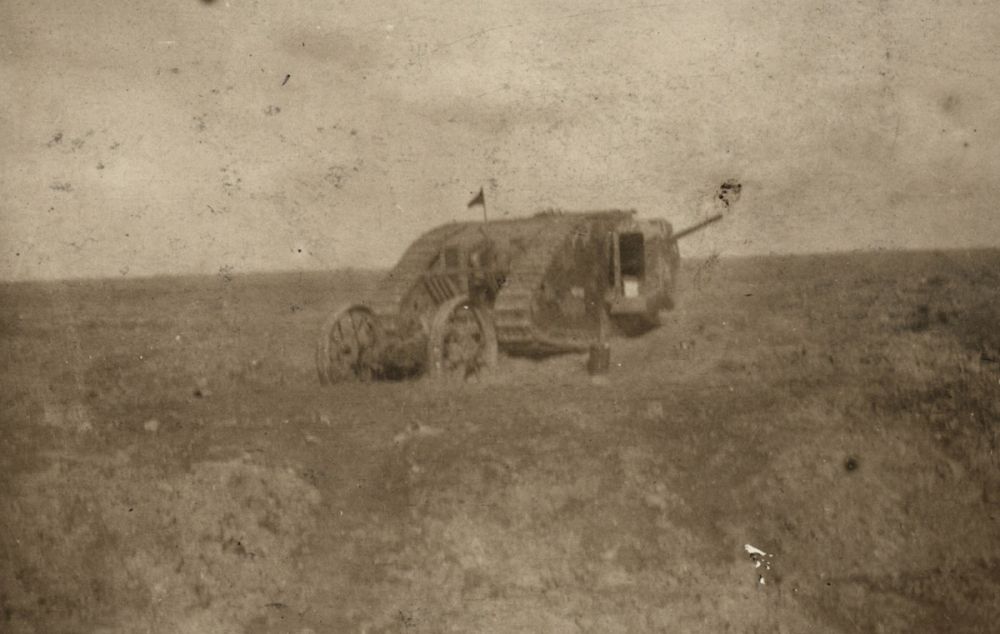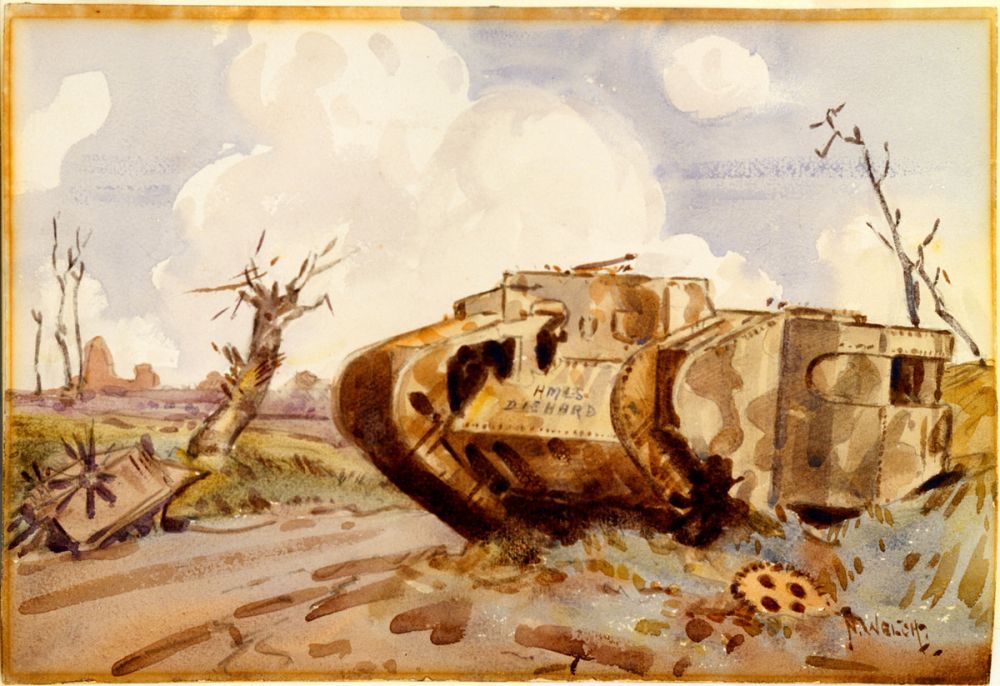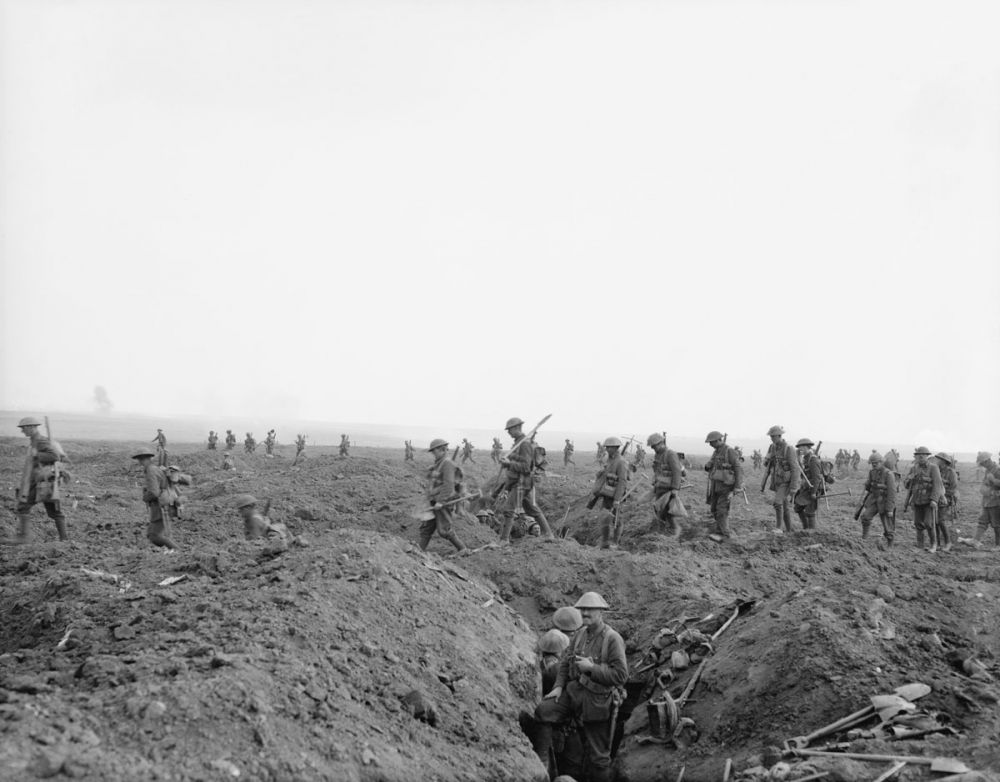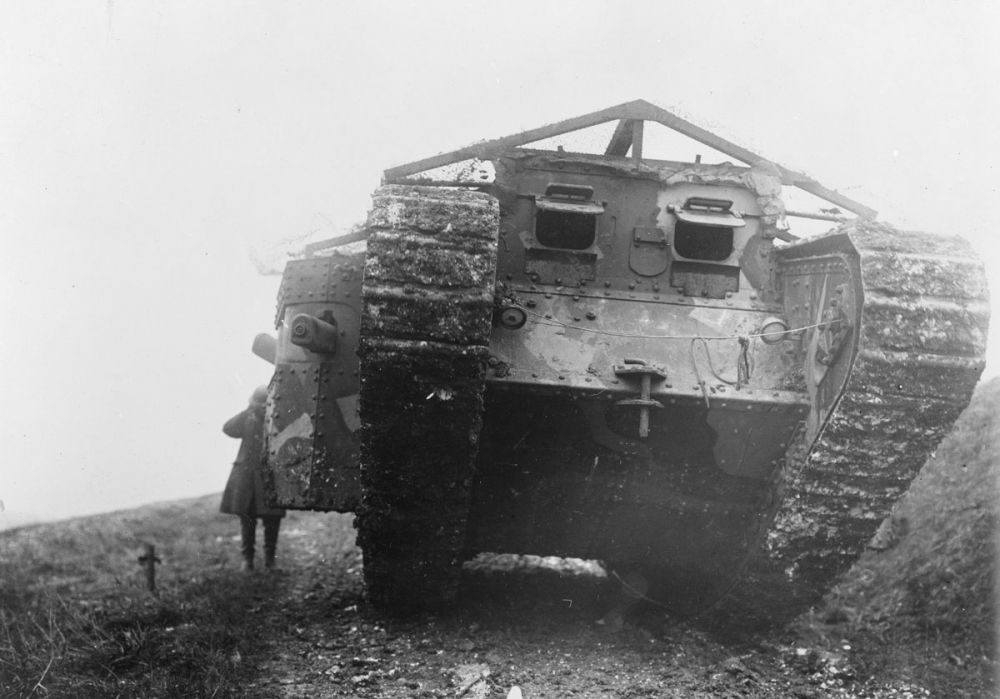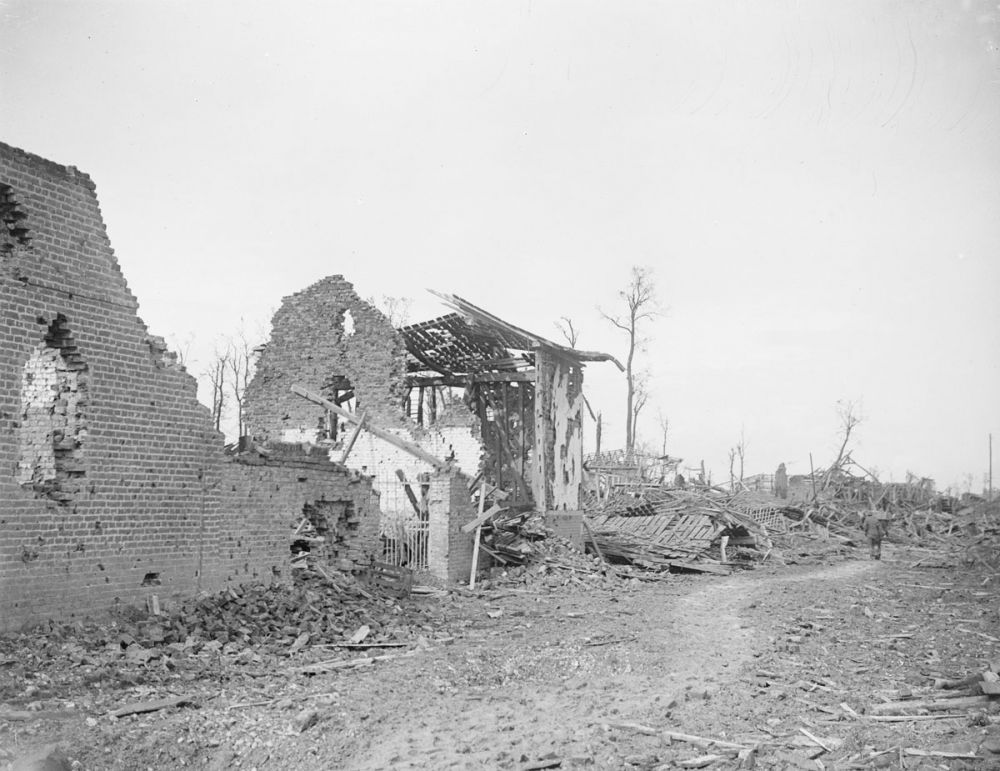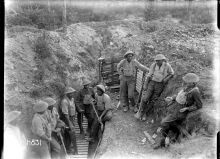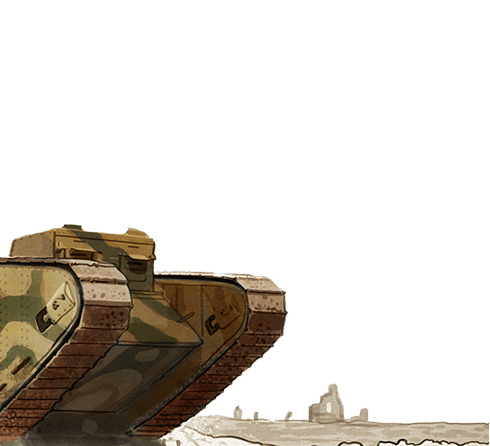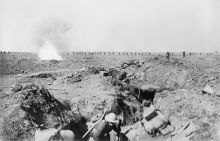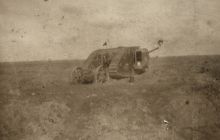Flers and tanks
You are standing right outside the village of Flers. This farm road that you’re on - leads down from the New Zealand Monument on the skyline behind you, and this is where the New Zealanders were at 9.00 in the morning of 15 September 1916.
The New Zealand Rifle Brigade had seized the high ground, advanced to this area and were preparing to fight their way forward. Imagine them lying on their bellies, and looking through uncut wire at German machine gun posts in the buildings in front of you. They were stuck here because out in front of them was a trench-system known as the Flers Trench and the wire entanglements were blocking their way, making it impossible to cross. There was also a German machine gun post in a building on the edge of the village, that mowed down anyone moving forward.
The two tanks, D 11 and D 12, operating on this flank rumbled in and performed what is quite possibly the first co-ordinated attack between infantry and mechanised armour in the history of warfare. These slow, lumbering contraptions were viewed with scepticism by the soldiers, and rightly so, as they were untested on the field of battle and could barely go faster, cross-country than one and a half kilometres an hour. One soldier, upon witnessing a tank, dismissed the machine as a ‘cough lozenge with tracks’.
Tank D 12, under Captain Nixon, lumbered forward and Rifleman Dobson ran up to it - dodging German rifle fire - and managed to get inside handing over a message from his platoon commander, Lieutenant Butcher. He guided the tank over to where the machine guns were – in a farm building in front of you – the tank crashed into it – knocking it over – scattering the Germans in all directions. This is the first time in history that infantry requested tank support in action.
You can imagine the surprise and the shock of the Germans, who saw these tanks for the first time, rumbling through the lines and destroying their positions, belching smoke and firing their machine guns and six-pounders. At the same time, Tank D 11 proved its worth by moving forward, crushing the wire and suppressing the German machine guns with its gunfire. This allowed the New Zealand riflemen to flow through and fight their way through the buildings and help secure the village of Flers, allowing the rest of the Rifle Brigade to continue their attack in the open ground to your left front.
So, this really is a historic moment for the New Zealand Division. This is one of the first examples of tanks displaying their usefulness and shows the origins of mechanised armoured vehicles working with infantry - something which was to evolve and become standard practice as the war progressed.


